Photos of legless lizard and other newly discovered species in Brazil’s Cerrado
An expedition to Brazil’s Cerrado has turned up more than a dozen undiscovered species. Conservationists say the discoveries add urgency to protecting the grassland habitat which is rapidly being converted for agriculture.
The research team, which included scientists from Conservation International (CI) and Brazilian universities, found 14 species believed new to science — including eight fish, three reptiles, one amphibian, one mammal, and one bird — in and around the Serra Geral do Tocantins Ecological Station, a 716,000-hectare (1,769,274-acre) protected area.
“It’s very exciting to find new species and data on the richness, abundance, and distribution of wildlife in one of the most extensive, complex, and unknown regions of the Cerrado,” said CI biologist Cristiano Nogueira, the expedition leader. “Protected areas such as the Ecological Station are home to some of the last remaining healthy ecosystems in a region increasingly threatened by urban growth and mechanized agriculture.”
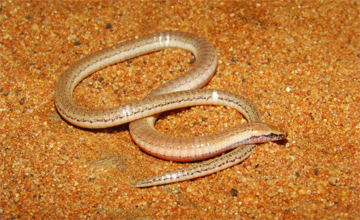 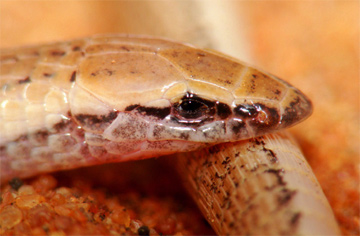 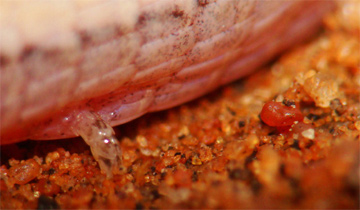 This species of lizard of the genus Bachia is one of the new species discovered during the expedition. Although there are other species of the genus in the Cerrado (almost all discovered and described only recently), this new species has only been recorded in the Ecological Station. The absence of legs and the sharply pointed snout help in locomotion over the surface layer of sandy soil, predominating in all the Jalapao, formed by the natural erosion of the escarpments of the Serra Geral plateaus. Photos by Miguel Trefaut Rodrigues 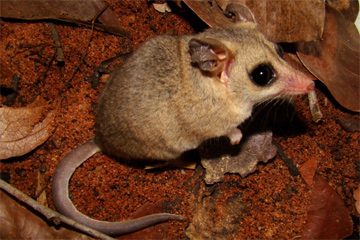 Some of the recorded species are relatively rare and little known, like this small fat-tailed mouse opossum of the genus Thylamys, registered for the first time in the Jalapao. Although this species was described from a Cerrado enclave within the Caatinga region, recent surveys have shown that the range of this species is concentrated in the northern portion of the Cerrado savannas. Photo by Agustin Camacho 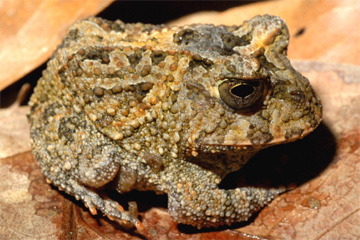 Other species such as this horned toad believed to be new to science of the genus Proceratophrys occupy very restricted areas. Protected areas like the EESGT are fundamental, because they shelter large populations of the species, reducing the threat of extinction from destruction of the habitats outside the reserves. Photo by Paula Hanna Valdujo. 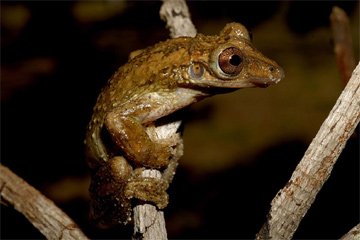 This species of amphibian (Corythomantis greeningi) occurs mainly in the Caatinga region, with only scant recordings in the Cerrado.The discovery of this species in the EESGT is the first recorded for the Jalapao region. The secretions of its skin can cause irritation to the eyes and nose. Photo by Paula Hanna Valdujo |
The 29-day expedition also turned up several threatened species such as the hyacinth macaw, marsh deer, three-banded armadillo (tatu-bola), the Brazilian merganser, and the dwarf tinamou among the more than 440 species of vertebrates recorded.
“The geographic distribution of some of the species registered is restricted to the area of the ecological station; thus their survival depends on the good management of the protected area and its immediate surroundings,” said LuÃs Fabio Silveira, of the Department of Zoology of the University of Sao Paulo. “From the survey we can obtain data concerning the anatomy, reproductive biology, life cycle, and distribution of the species, all of which help us in future conservation programs.”
Conservation International says the study will be used to support the development of a management plan for the Serra Geral do Tocantins Ecological Station.
“We need to know our protected areas better, especially the ecological stations whose principal objective is to generate scientific knowledge of Brazilian biodiversity, so little studied and already so severely threatened,” Nogueira said. “Unfortunately, extensive areas of the Cerrado, like the Ecological Station, are becoming increasingly rare, thus making the data collected even more important. Above all, it is necessary to know to conserve.”
The Cerrado, a wooded grassland in Brazil that once covered an area half the size of Europe, is fast being transformed into croplands to meet rising demand for soybeans, sugarcane, and cattle. The Cerrado is now disappearing more than twice as the rate as the neighboring Amazon rainforest, according to Ricardo Machado, author of a recent Conservation International (CI) study on the Cerrado.
“The Cerrado was pretty much intact until the 60s, when most of the relevant economic activity was the cattle ranching,” Dr. Ricardo Machado, author of a recent Conservation International (CI) study on the Cerrado, told mongabay.com. “During the 70s, when new technologies and new varieties of plants (corn, soybean, rice, wheat, eucalyptus, and grasses for livestock) where introduced the Cerrado became an important region for the Brazilian agribusiness. More and more native areas were cleared to be converted for planted pastures (using African grasses) or croplands. The natural vegetation removed was converted to charcoal to be used by the steel industry.”
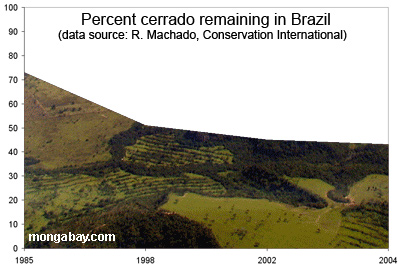 Remaining cerrado cover in Brazil according to Dr. Machado |
Machado estimates that the area of Cerrado of a percentage of its original 204 million hectares in extent, has fallen from around 73 percent in 1985 to around 43 percent in 2004. He believes that the area occupied by pastures and croplands has likely increased since then, given the substantial rise in Brazil’s agricultural production and land prices, and pegs annual loss at 2.2 million hectares every year, or about 1.1 percent of the remaining Cerrado. By comparison, Brazil’s Amazon rainforest lost about 10.7 million hectares between 2002 and 2006, 2.1 million hectares or about 0.5 percent per year.